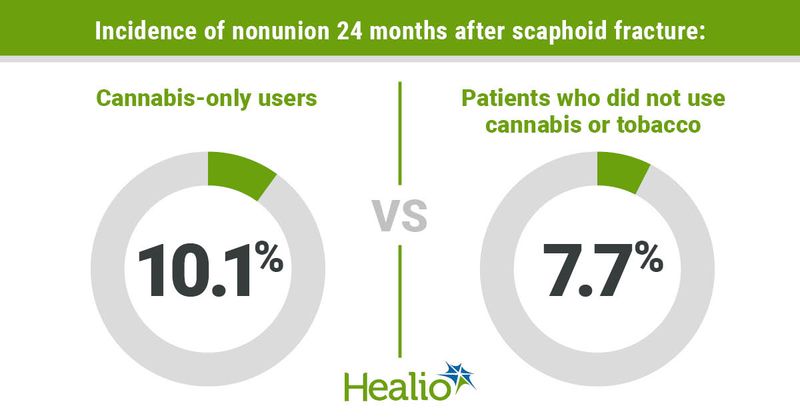Cannabis use may be risk factor for scaphoid fracture nonunion
Click Here to Manage Email Alerts
Key takeaways:
- Cannabis-only users had a 10.1% rate of nonunion 24 months after a scaphoid fracture.
- Patients who did not use either tobacco or cannabis had a 7.7% rate of nonunion 24 months after a scaphoid fracture.
SAN FRANCISCO — Documented cannabis use may be associated with an increased risk of scaphoid fracture nonunion compared with non-use, according to results presented here.
“While tobacco use is already established as a risk factor for a scaphoid nonunion, our multivariate analysis results showed that documented cannabis use is also a risk factor for nonunion,” Neil Pathak, MD, a PGY-4 at Yale University, said in his presentation at the American Academy of Orthopaedic Surgeons Annual Meeting.

Pathak and colleagues performed a retrospective cohort study that analyzed data from the PearlDiver database on 159,998 adults with a scaphoid fracture that was initially treated with nonsurgical management between 2010 and 2020.

Patients were categorized into the following three groups: patients who used only tobacco, patients who used only cannabis and patients who did not use either tobacco or cannabis.
Primary outcome measure was rate of nonunion at 6, 12 and 24 months after scaphoid fracture.
Pathak said the rate of nonunion for the overall patient population was 9.9%.
At the 24-month mark, Pathak said tobacco-only users had the highest rate of nonunion at 11.8%, followed by cannabis-only users at 10.1%. Patients who did not use either tobacco or cannabis had the lowest nonunion rate, which was 7.7%.
In addition, Pathak said cannabis-only use was a risk factor for nonunion at each studied interval.
“Going forward, future prospective investigations will be critical in guiding how we treat patients and how we give them guidance,” Pathak said.

